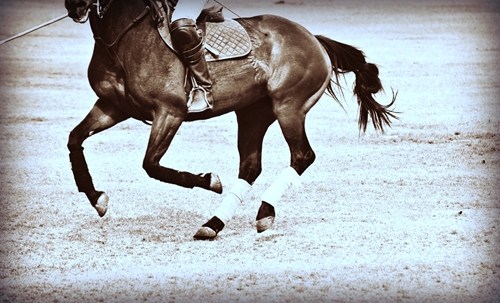Keeping your horse’s hooves healthy is an important aspect of care.
Your horse’s hooves go through a lot, regardless of whether you ride for sport or leisure. Here is what you need to know about hooves and how to keep them healthy:
“The easiest way to maintain a healthy hoof is to keep it clean.”
Basic hoof care
The easiest way to maintain a healthy hoof is to keep it clean. Pick your horse’s feet regularly and remove any small debris before you ride him. After riding, check again for any injuries and clean his hooves to remove small rocks or other objects. You don’t need to call a farrier every time you pick a horse’s hooves, and the time spent cleaning is a chance for the two of you to bond.
Schedule regular farrier visits for trimmings and shoeings. How often this is needed depends on your individual horse. Some need a trim every few months, while others need one after a few short weeks. Your farrier can suggest a schedule once he or she comes to understand how your horse’s hooves are structured.
You can also help by designing a diet that supports hoof health. Equine supplements like biotin help support healthy hoof growth, and proper exercise increases blood flow to the area.
Try to keep your horse’s hooves either consistently damp. Quickly shifting between the two causes them to rapidly swell and contract, loosening the horseshoe nails. This is a more difficult in certain climates and seasons than others, so you might need to adjust your bedding and turnout time based on the conditions outside.
Common hoof ailments
Thrush is common among horses, but thankfully, it is easy to treat. All you have to do is trim the decaying tissue and clean the area with hoof products.
According to the University of Minnesota, the steps to repair a hoof crack depend on its origin. Grass cracks originate from the ground up and are simple enough to fix – just trim and shoe the hoof. Sand cracks, on the other hand, spread from the coronary band and head down. They often need to be patched until the hoof grows out, a process that takes nine to 12 months.
As TheHorse.com says, quarter cracks – those on the side of the hoof – can be some of the most difficult to treat. These can easily become infected or bleed and often require an X-ray to determine the exact cause of the crack.
A solar abscess is an infection of the sole caused by bruising, foreign objects or other sources of trauma. You can treat this condition by soaking the hoof in a mixture of warm water and Epsom salt, the University of Minnesota noted. A hot nail, meanwhile, occurs when a horseshoe nail enters the sensitive areas of the hoof wall. You’ll have to clean the nail hole with antiseptic, bandage the area and get your horse a tetanus booster. A street nail is when any other object penetrates the foot and requires immediate veterinary attention.
Your horse’s hooves require dedicated care to keep them healthy and prevent infection, inflammation and disease. You should establish a dedicated schedule with your farrier and veterinarian to keep hooves healthy and functioning.








